Last Updated on: March 28th, 2025
- Licensed Agent
- - @M-LifeInsurance
Indexed Universal Life Insurance (IUL) is a type of permanent life insurance that offers flexible premiums and the potential for cash value growth tied to a stock market index. It balances life insurance protection and investment opportunities, making it an attractive option for those looking to build wealth while ensuring financial security for their loved ones.
Unlike traditional life insurance policies, IUL allows policyholders to participate in market growth while limiting downside risks. This makes it an appealing choice for those who want to maximize their financial potential without exposing themselves to full market volatility.
Table of Contents
ToggleHow Does an Indexed Universal Life Policy Work?
An Indexed Universal Life Insurance policy combines life insurance coverage with an investment component. Here’s how it works:
1. Premium Payments
You pay premiums, which are split into two parts:
- Cost of Insurance (COI): This covers the death benefit and administrative expenses.
- Cash Value Account: The remaining premium goes into a cash value account that accumulates interest based on a stock market index.
2. Cash Value Growth
The cash value component grows based on the performance of an index, such as the S&P 500. However, instead of directly investing in the stock market, your funds are linked to the index through an interest-crediting strategy set by the insurance company.
3. Interest Crediting Methods
IUL policies use different interest crediting methods, which may include:
- Annual Point-to-Point: Compares the index’s value at the beginning and end of the policy year.
- Monthly Averaging: Calculates the average of monthly index values over a policy year.
- Cap and Floor Rates: Policies typically have a cap (maximum interest rate you can earn) and a floor (minimum rate, often 0%, to protect against losses).
4. Flexible Premiums & Death Benefits
- You can adjust your premium payments if there is enough cash value to cover policy costs.
- The death benefit can also be adjusted within policy limits.
5. Loan & Withdrawal Options
- You can borrow against or withdraw from your cash value.
- Loans may be tax-free if appropriately structured, but excessive withdrawals can reduce the death benefit or cause the policy to lapse.
What’s the Difference Between IUL and Other Types of Permanent Life Insurance?
IUL is just one type of permanent life insurance. Here’s how it compares to other options:
Whole Life Insurance vs. IUL
| Feature | Indexed Universal Life (IUL) | Whole Life Insurance |
| Cash Value Growth | Based on a stock market index | Fixed, guaranteed interest rate |
| Risk Level | Moderate (subject to market performance) | Low (guaranteed returns) |
| Premium Flexibility | Adjustable premiums | Fixed premiums |
| Death Benefit | Can be adjusted | Fixed amount |
Variable Universal Life (VUL) vs. IUL
| Feature | Indexed Universal Life (IUL) | Variable Universal Life (VUL) |
| Investment Risk | Limited by floors and caps | Direct exposure to the stock market |
| Cash Value Growth | Based on stock index performance | Based on actual investment choices |
| Market Downside Protection | Yes, floors protect against negative growth | No, full market exposure |
| Premium Flexibility | Adjustable | Adjustable |
Who Should Consider an Indexed Universal Life Insurance Policy?
An IUL policy may be a good choice for individuals in the following situations:
1. You Want Lifetime Coverage with Flexibility
Unlike term life insurance, which expires after a set period, IUL provides lifelong protection as long as premiums are paid.
2. You Seek Tax-Advantaged Savings
- Tax-Deferred Growth: The cash value grows tax-free until withdrawn.
- Tax-Free Loans: You can access your cash value via policy loans without triggering taxes (if structured correctly).
3. You Want Market-Based Growth Without High Risk
IUL offers the potential for higher returns compared to whole life insurance but with downside protection that variable universal life does not provide.
4. You Need Supplemental Retirement Income
- Many use IUL as a source of tax-free retirement income by withdrawing or taking loans from the cash value.
- Unlike 401(k)s and IRAs, there are no contribution limits on how much you can invest in an IUL policy.
5. You Have a Long-Term Financial Plan
IUL policies work best for individuals who can contribute consistently and let the cash value accumulate over time.
6. You Want Estate Planning Benefits
- IUL can be a valuable tool in estate planning, allowing policyholders to pass wealth to their beneficiaries tax-free.
- Some people use IUL to fund trusts, ensuring financial security for their heirs.
How to Get Indexed Universal Life Insurance
Getting an IUL policy involves several steps:
1. Assess Your Needs
- Determine how much life insurance coverage you need.
- Consider how an IUL fits into your financial goals (wealth-building, retirement planning, or legacy planning).
2. Compare Policies & Providers
- Different insurers offer varying interest caps, participation rates, and fees.
- Read the fine print to understand charges such as cost of insurance, administrative fees, and surrender charges.
3. Work with a Financial Advisor
- A professional can help structure your policy to maximize benefits.
- They can also help you compare indexing strategies and investment options.
4. Undergo Medical Underwriting
- Most policies require a health exam to determine eligibility and premium rates.
- Some insurers offer simplified or guaranteed issue policies with no medical exam, but at higher costs.
5. Choose Indexing Strategies
- Some policies allow you to select different indexing strategies to optimize cash value growth.
6. Review and Adjust Over Time
- Keep track of your policy’s performance and adjust premiums or benefits as needed.
- As your financial situation changes, you may need to increase or decrease your contributions.
Pros and Cons of Indexed Universal Life Insurance
Pros:
✅ Potential for Higher Returns – Cash value can grow based on market index performance.
✅ Downside Protection – Floors protect against market downturns.
✅ Flexible Premiums – Adjust contributions as needed.
✅ Tax Advantages – Tax-deferred growth and tax-free loans if structured properly.
How Much Does Life Isurance Cost?
✅ Lifelong Coverage – Unlike term life insurance, IUL lasts a lifetime.
✅ Estate Planning Tool – Useful for passing wealth to heirs.
✅ No Contribution Limits – Unlike IRAs or 401(k)s, there’s no cap on contributions.
Cons:
❌ Complexity – IUL policies have many moving parts, making them harder to understand.
❌ Caps on Gains – Limited upside compared to direct stock investments.
❌ Fees and Costs – Charges for insurance, administration, and withdrawals can reduce returns.
❌ Requires Commitment – Best for long-term planners who can maintain the policy.
Frequently Asked Questions (FAQs)
1. Is Indexed Universal Life Insurance risky?
Due to its floor protection, IUL is less risky than direct stock investments but is not entirely risk-free. Market performance affects cash value growth, and fees can reduce gains.
2. Can I lose money with an IUL policy?
While the floor rate (usually 0%) protects against market downturns, policy fees, and costs may reduce cash value if returns are low.
3. What happens if I stop paying premiums?
If there is enough cash value, the policy can temporarily cover costs. However, if the cash value is depleted, the policy may lapse.
4. How long does it take for the cash value to grow?
Cash value growth depends on premiums, fees, and market performance. Typically, significant growth occurs after several years of consistent contributions.
5. Can I withdraw money from my IUL policy?
Yes, you can take loans or withdrawals, but excessive withdrawals may reduce the death benefit or cause the policy to lapse.
Conclusion
Indexed Universal Life Insurance offers a unique mix of protection and market-linked cash value growth. It’s a good choice for individuals looking for flexibility, tax advantages, and long-term wealth-building potential. However, it is crucial to understand its features, fees, and investment risks before deciding.
If you’re considering an IUL policy, consult a financial advisor to ensure it aligns with your financial goals and insurance needs. With proper planning and commitment, IUL can be a powerful tool for building financial security and wealth for the future.

Joyce Espinoza, Expert Life Insurance Agent
Joyce Espinoza is a trusted life insurance agent at mLifeInsurance.com. She’s been in the insurance industry for over ten years, helping people, especially those with special health conditions to find the right coverage. At MLife Insurance, Joyce writes easy-to-understand articles that help readers make smart choices about life insurance. Previously, she worked directly with clients at Mlife Insurance, advising nearly 3,000 of them on life insurance options.




